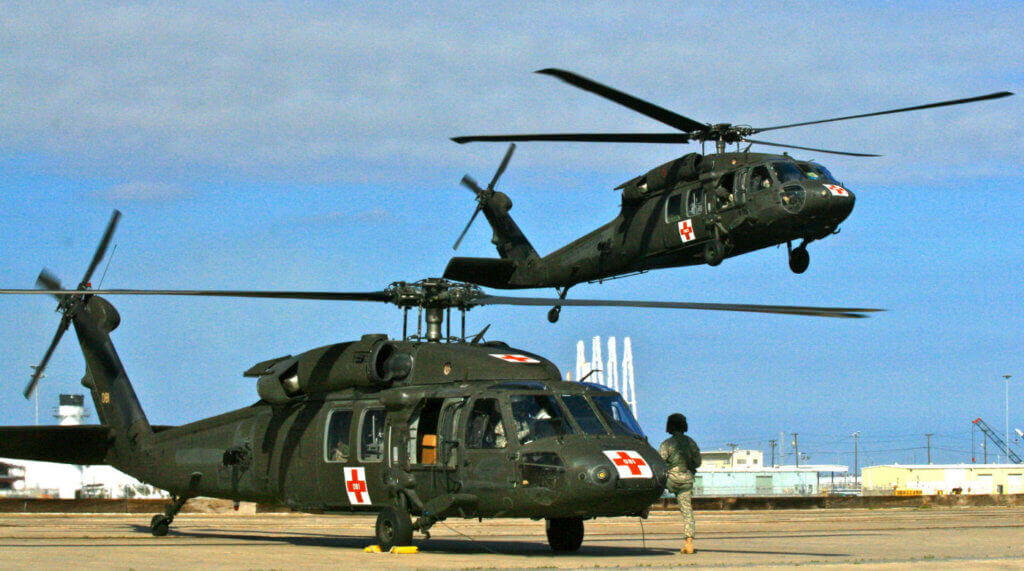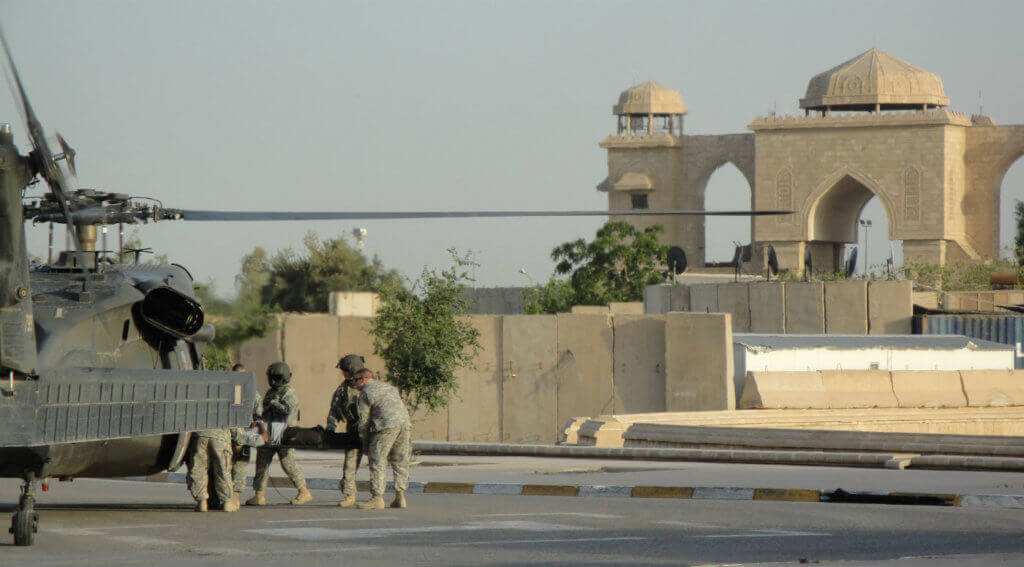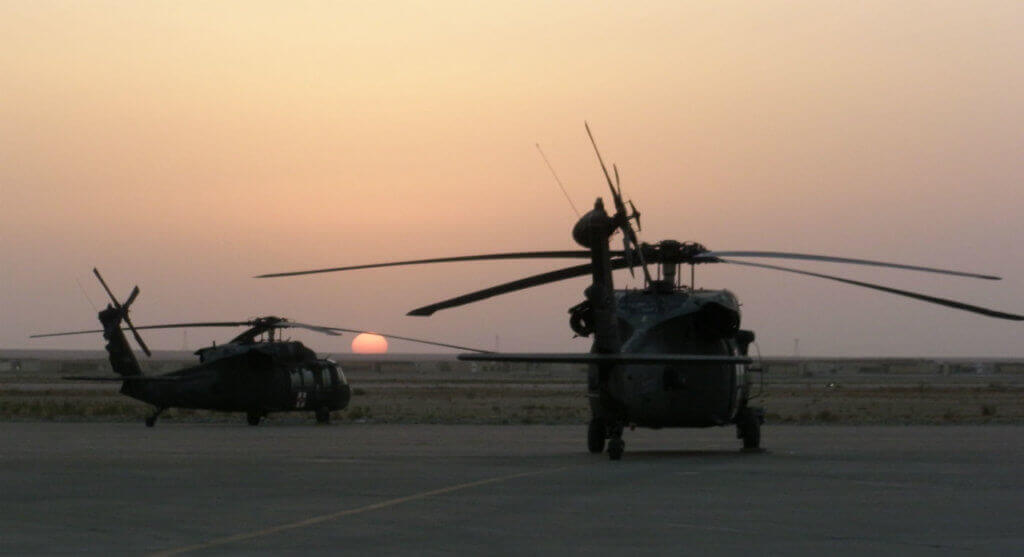Late last year, Reuben “Doc” Ryan published Bones One Zero: Racing the Reaper in Iraq, a memoir of his time as a U.S. Army flight medic in the Iraq War. Ryan has served as a medic with the 75th Ranger Regiment, 4th Ranger Training Brigade, and as a flight medic with the 1st Infantry Division, participating in hundreds of medevac missions. Vertical recently corresponded with Ryan about his experiences and his new book by email.
Vertical: After serving in the Navy and then working as a long-haul trucker, you decided to join the Army after 9/11. What motivated that decision, and what was it like starting again from boot camp?
Reuben Ryan: During 9/11, I had just bought a new house and a new big rig. I was in too deep to drop everything, assuming at the time that the fight would be a blowout like Desert Storm, and I would be finishing training by the time it was over. I knew deep down that I had to make a move or I would regret it for the rest of my life. The world had changed, and the thought of telling my kids that I never did anything to help out was too much to handle.

At the time, there was a constant drumbeat of media reporting, sometimes gleefully, that recruiting was down. When Pat Tillman joined, the decision for me was made. I started selling everything I owned and preparing myself to come back in. At 32, I went back to boot camp, because I had been out so long, not to mention losing a pay grade for every two years out (I was out for 11 years). It was a lot more fun the second time, because I knew all the games and played back accordingly; I was going to have a good time. I volunteered for Airborne and Ranger Indoctrination and at 33, became one of the oldest guys to survive RIP and join the 75th Ranger Regiment.
Vertical: How did you become a flight medic? How much did you know about the job beforehand, and what was the most eye-opening part of the job for you?
RR: I was working at Ranger School when I received orders to report to a CAB at Fort Riley, Kansas. I had no idea what a CAB was, having spent the last several years in the Ranger community. When I was told the CAB was a Combat Aviation Brigade, I called ahead to find out about the Dustoff unit. I was told they would be deploying within five months of my arrival, so I had to make some fast moves.
We make our own destiny, so I left Fort Benning one night after work and drove all night. Nine hundred and eighty-three miles later the next day at noon I arrived at Fort Riley and found my way to the Dustoff Company. I threw on all my badges and my tan beret and reported to the First Sergeant and told him of my intentions. The First Sergeant and the CO [commanding officer], a former SF [special forces] guy, liked my style and the will I had to make a move against the usual paths (a Dustoff attribute). The CO told me to be ready to fly in four hours. They put me in the back, told me to shut up, sit down, and only speak when spoken to. For the next four hours, they gave me the flight from hell. Thank God the flight was in the night, because I was white knuckling pretty hard. When we taxied back to parking they asked, “So, what do you think?”

I responded, “That was fun, I never got to land in a helicopter before!” The statement was technically true, since up until that point I had only jumped and fast roped out of aircraft. I got a few laughs and more importantly, I got the job. There was no time to go to the course, so it was an intense OJT [on-the-job] training in a short amount of time. My previous background helped tremendously, and willingness and humble attitude will get you far.
My only experience with Dustoff was being on the ground and packaging the wounded for pickup, so handling the wounded when they were loaded on the aircraft to drop off at the next level of care was intense and interesting. The responsibility of the flight medic is enormous. When we are called, it usually means someone is really hurt, and every second counts. All of the flight medics in our unit were former line medics, so we brought the intensity that we had on the ground to the air. Not only was I taking care of the patient, but I took control of the aircraft and decided which destination hospital to go to and whether or not the pilots needed to go max speed, as well as other factors.
Vertical: Your book is full of remarkable stories. What’s one of the most memorable experiences you had while deployed in Iraq?
RR: There was one mission that had a moment that I will never forget. We got a call one afternoon that a Humvee rolled over, with a massive head trauma that was unresponsive. There was absolutely no other information, didn’t know if what caused it, if the LZ [landing zone] was hot, we had no air cover, etc. We launched in under five minutes and were on a scene a few minutes later.

I got on the ground to the patient and a guy was holding the patient’s head. His Stryker was just rolling by and came up on it. We began packaging him and prepared to load when they asked what I was going to do about her. “Who?” I asked, and the guys pointed to another soldier 30 yards away. The mission changed that quickly, typical for Dustoff, and we adjusted accordingly. I used hand signals to my crew chief, a crusty guy named EZ, and he relayed the info to the pilots. I went to go check on the girl and we went from one massive head trauma to two.
As I was carrying the girl back over the sand and fighting the dust that the rotors brought I saw my pilot-in-command, Captain James Tullis, standing outside the aircraft, helping EZ move the litter pans to accommodate the second critical patient. That image is burned into my mind. Captain Tullis was exposing himself with no back plate of body armor to help complete the mission. That is what the Dustoff community is all about, doing whatever it takes to complete the mission, living up to the Dustoff creed.
Vertical: When and why did you decide to write the book? What were the most difficult and most enjoyable parts of writing it?
RR: I wrote the book while sitting on the porch smoking cigars with the crews about seven months into the deployment. The missions that we had, the epic pranks, and the risks we took were worthy of print. I think that we owe it to future generations to tell our stories and give them perspective on war, so they will never be influenced by those who have never been. My book is not pro-war or anti-war; it was just what happened to us. I went out with my friends, again and again, at all hours, unarmed and sometimes afraid, because my buddy that I never met needed me.

I found some of the hardest parts to write about were when I exposed some of my emotion, and relived a particular mission that haunted me for a while. Before I continue, this book was written on a humorous slant, with no mention of PTSD [post-traumatic stress disorder] or anything like that. I wanted to write something fun, interesting, exciting and more importantly, entertaining. There were no Rambo moments, unless Rambo ran across the flight line naked because a pilot removed his clothing while he was showering. Our world was trauma, the worst kind, and to survive it you need to stay positive and find the good and keep laughing.
Vertical: What do you hope people take away from reading Bones One Zero?
RR: I hope that they come away from it feeling like they had a good read, and did not waste their time. There is nothing worse than a war story that reads like a Power Point presentation. Bones One Zero has zero filler; there will not be several pages of the history of the region, or a particular unit. I wrote it for people who have never been in the military, but kept it interesting enough so that a seasoned vet would laugh as well. Also, I put my email on the last page in case you have any questions while you are reading it. I want the reader to have an interactive experience with the author.
I have received tremendous feedback from people all over the world. When I can make a 70-year-old woman from Maine and a sergeant with five deployments blush at the same thing, I know my job was done. Everything in the book is true and approved by the guys who were there. I hope you enjoy. DUSTOFF!
Editor’s note: This interview has been edited and condensed.









